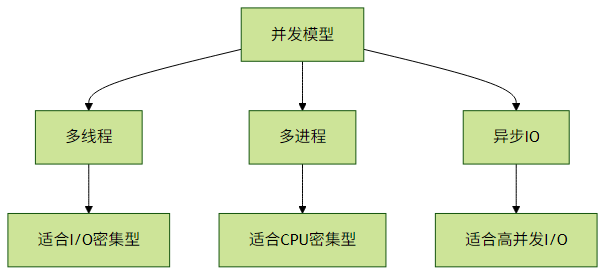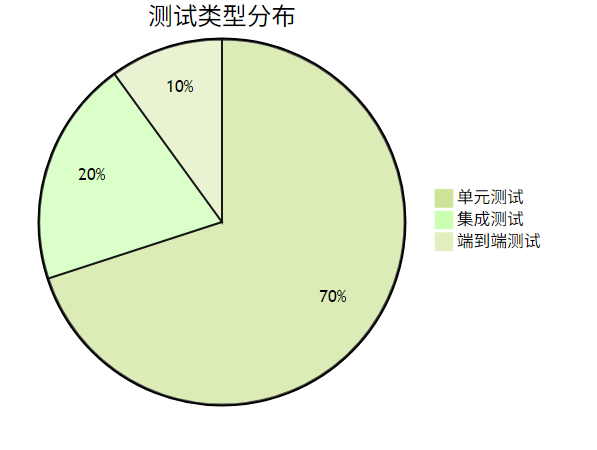Python并发与网络编程实战指南
Python并发与网络编程实战指南
一、并发与并行编程
1. 多线程编程(threading)
Python的threading模块提供了线程级别的并发能力,但由于GIL(全局解释器锁)的存在,多线程更适合I/O密集型任务。
import threading
import time
def worker(num):
print(f"Worker {num} started")
time.sleep(2) # 模拟I/O操作
print(f"Worker {num} finished")
threads = []
for i in range(3):
t = threading.Thread(target=worker, args=(i,))
threads.append(t)
t.start()
for t in threads:
t.join() # 等待所有线程完成实践建议:
- 使用
ThreadPoolExecutor简化线程管理 - 避免在多线程中共享可变状态
- 使用
Lock或RLock进行线程同步
2. 多进程编程(multiprocessing)
multiprocessing模块通过创建多个进程绕过GIL限制,适合CPU密集型任务。
from multiprocessing import Process
def cpu_bound_task(n):
result = 0
for i in range(n):
result += i*i
print(result)
if __name__ == '__main__':
processes = []
for i in range(4):
p = Process(target=cpu_bound_task, args=(10000000,))
processes.append(p)
p.start()
for p in processes:
p.join()实践建议:
- 进程间通信使用
Queue或Pipe - 考虑使用
Pool管理进程池 - 注意进程启动开销比线程大
3. 异步编程(asyncio)
asyncio提供了单线程并发模型,适合高I/O密集型应用。
import asyncio
async def fetch_data(url):
print(f"开始获取 {url}")
await asyncio.sleep(2) # 模拟网络请求
print(f"完成获取 {url}")
return f"{url} 的数据"
async def main():
tasks = [
fetch_data("https://api.example.com/1"),
fetch_data("https://api.example.com/2"),
fetch_data("https://api.example.com/3")
]
results = await asyncio.gather(*tasks)
print(results)
asyncio.run(main())并发模型对比:

二、网络编程实战
1. 基础socket编程
# 服务端
import socket
with socket.socket(socket.AF_INET, socket.SOCK_STREAM) as s:
s.bind(('localhost', 65432))
s.listen()
conn, addr = s.accept()
with conn:
print('Connected by', addr)
while True:
data = conn.recv(1024)
if not data:
break
conn.sendall(data)
# 客户端
with socket.socket(socket.AF_INET, socket.SOCK_STREAM) as s:
s.connect(('localhost', 65432))
s.sendall(b'Hello, world')
data = s.recv(1024)
print('Received', repr(data))2. 使用requests处理HTTP请求
import requests
# GET请求
response = requests.get('https://api.github.com/events')
print(response.status_code)
print(response.json())
# POST请求
payload = {'key1': 'value1', 'key2': 'value2'}
response = requests.post('https://httpbin.org/post', data=payload)
print(response.text)实践建议:
- 使用
Session对象保持连接 - 设置合理的超时时间
- 处理HTTP错误状态码
3. 高级异步HTTP客户端(aiohttp)
import aiohttp
import asyncio
async def fetch(session, url):
async with session.get(url) as response:
return await response.text()
async def main():
async with aiohttp.ClientSession() as session:
html = await fetch(session, 'http://python.org')
print(html[:200]) # 打印前200个字符
asyncio.run(main())三、测试与调试技巧
1. 单元测试(unittest/pytest)
# 使用pytest
def add(a, b):
return a + b
def test_add():
assert add(2, 3) == 5
assert add(-1, 1) == 0
assert add(0, 0) == 0测试金字塔原则:

2. 调试技巧(pdb)
import pdb
def complex_function(a, b):
pdb.set_trace() # 设置断点
result = a * b
result += a + b
return result
print(complex_function(3, 4))常用pdb命令:
n(ext): 执行下一行s(tep): 进入函数c(ontinue): 继续执行直到下一个断点l(ist): 显示当前代码p(rint): 打印变量值
四、性能优化建议
选择正确的并发模型:
- I/O密集型:异步 > 多线程 > 多进程
- CPU密集型:多进程 > 异步
网络编程优化:
- 使用连接池
- 启用HTTP持久连接
- 考虑使用gRPC等高效协议
测试策略:
- 为并发代码编写确定性测试
- 使用
unittest.mock隔离网络依赖 - 定期运行性能测试
通过合理运用Python的并发模型和网络编程工具,可以构建出高性能的网络服务和数据处理应用。记住没有放之四海而皆准的方案,根据具体场景选择最适合的技术组合。